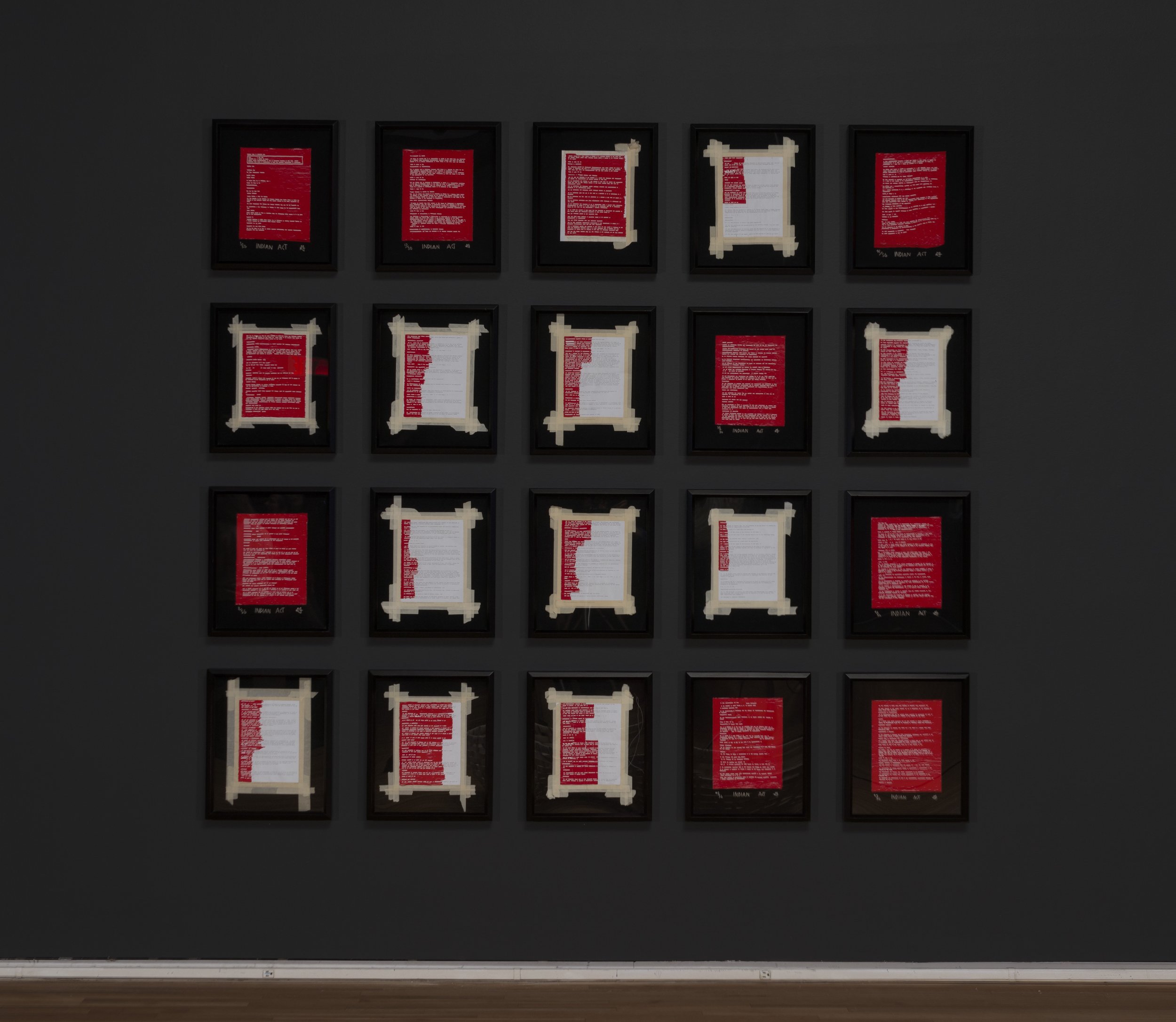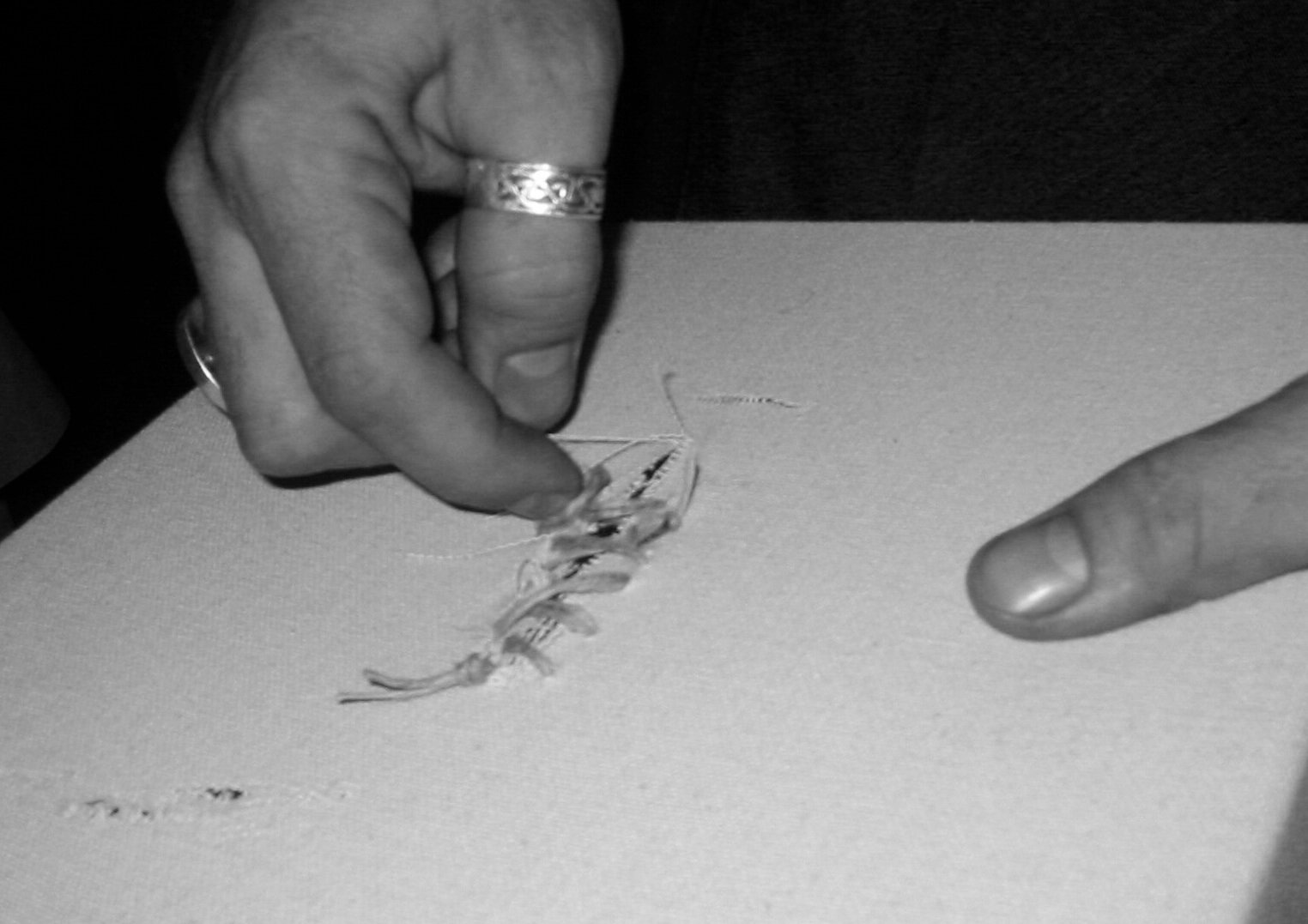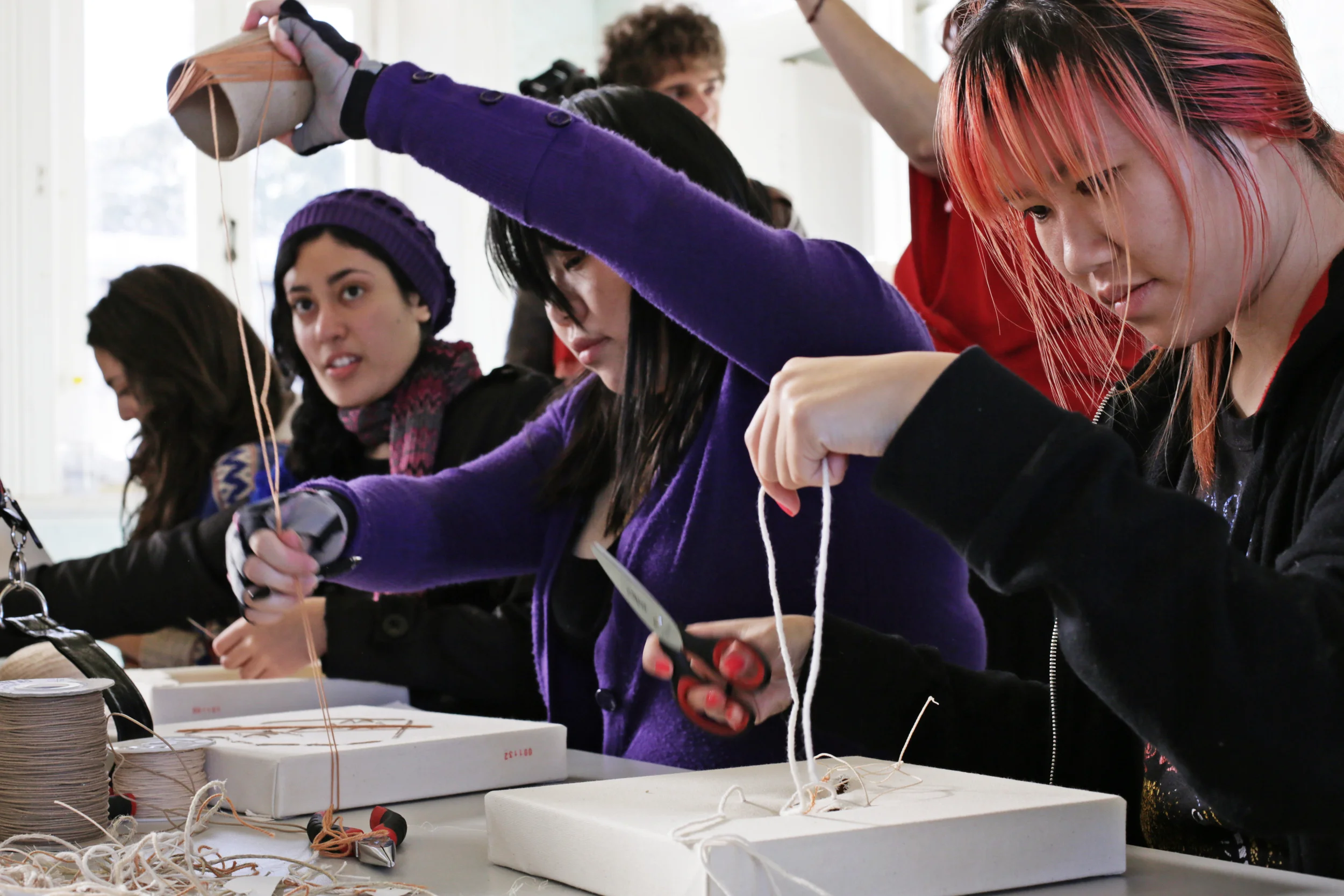Indian Act —2002
In 2002 I exhibited cont[r]act at Galerie Oboro, where I looked to the material practice of the Anishinabeg as a way to speak about my Algonquin identity and my inherent feelings of cultural displacement. I, with 250 participants, collectively beaded over the 56 pages of the Indian Act replacing the words of the law with red and white seed beads. I taught my guests how to bead during weekly beading-bees and guest-artist presentations at Concordia, expanding a personal meditation into collective action.
This work has become one of Canada’s most highly recognized and sought after works of contemporary Indigenous art created in the last 20 years. Indian Act acts as a direct precursor to A Song for My Mother through its challenge to rectify the exclusion of Indigenous women from their lineage and historical continuity.
“The Indian Act, which was enacted in 1876 when Canada was created, allows the government to control most aspects of aboriginal life: Indian status, land, resources, wills, education, band administration and so on.
The Indian Act is part of a long history of assimilation policies that intended to terminate the cultural, social, economic, and political distinctiveness of Aboriginal peoples by absorbing them into mainstream Canadian life and values.”
The Indian Act was amended many times. on April 17, 1985, after a 15+ year struggle led by Mary Two-Axe Earley, Bill C-31 was passed.
it finally revised Indian status to address the gender discrimination of the Act.
The Indian Act of 1985 abolished enfranchisement and restored status to those whose status had been removed through enfranchisement.
Links to other resources about enfranchisement and Mary Two-Axe Early
In 2000 I started to bead over the Indian Act… and then invited others to join me.
By 2002 over 250 participants had helped me.
AN EXAMPLE OF MY ‘BEADING BEES’
Friends, colleagues and strangers worked with me to replace the black text of the law with red beads, and the white page with white beads.
Here we are beading outside as part of the exhibition and cultural event ‘Memoires vives’ (2002) at the Montreal Museum of History.
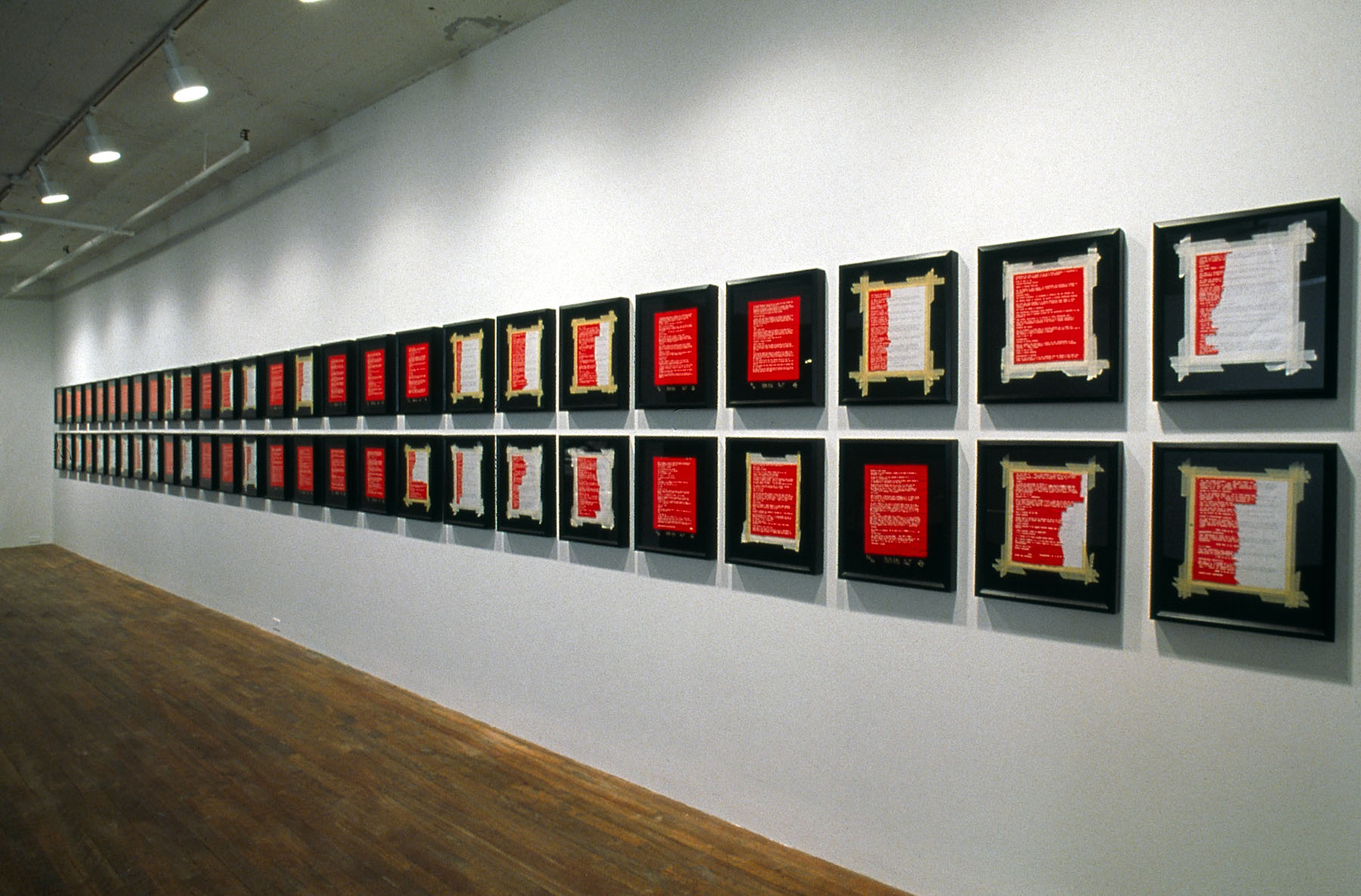



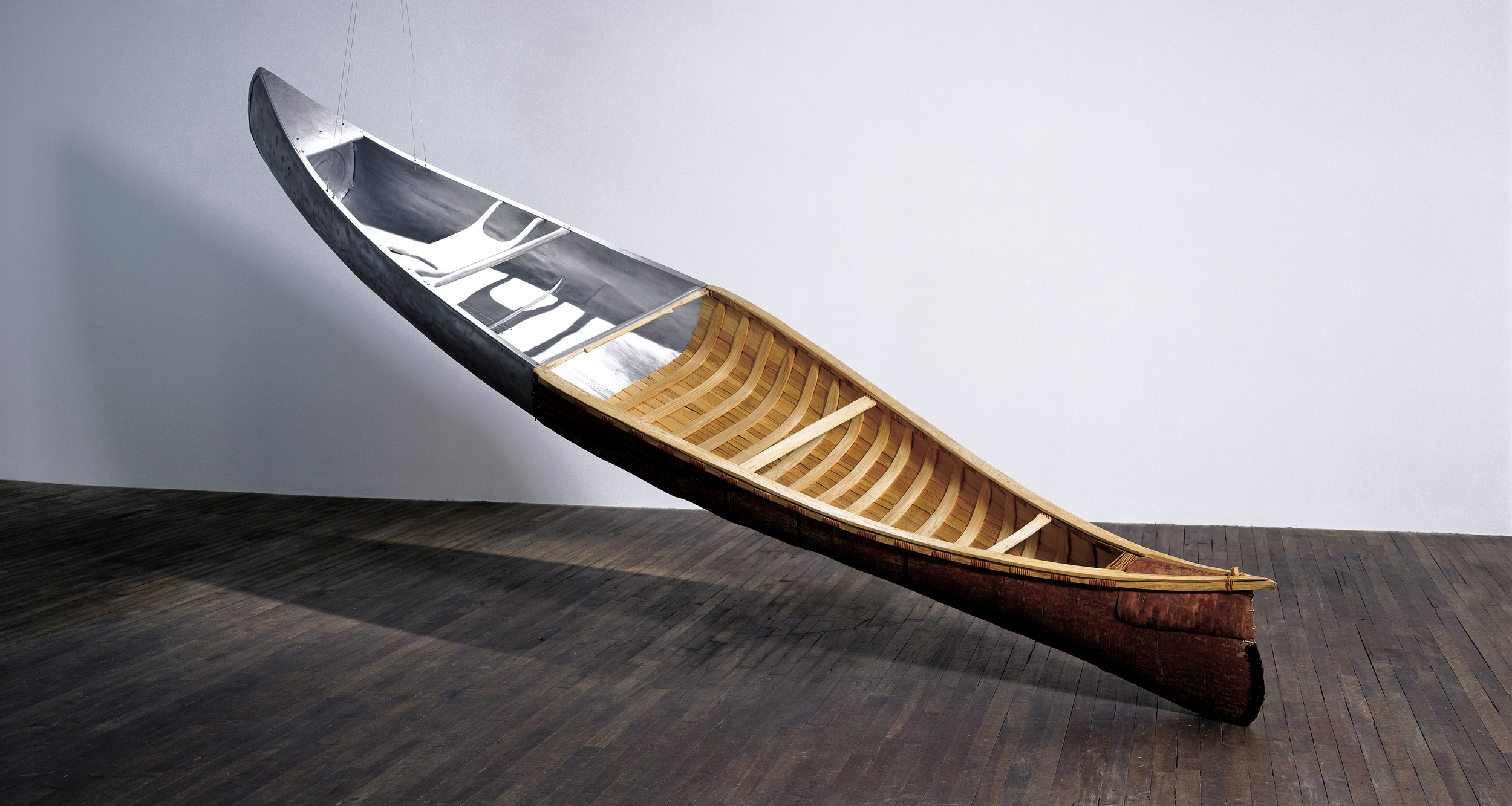
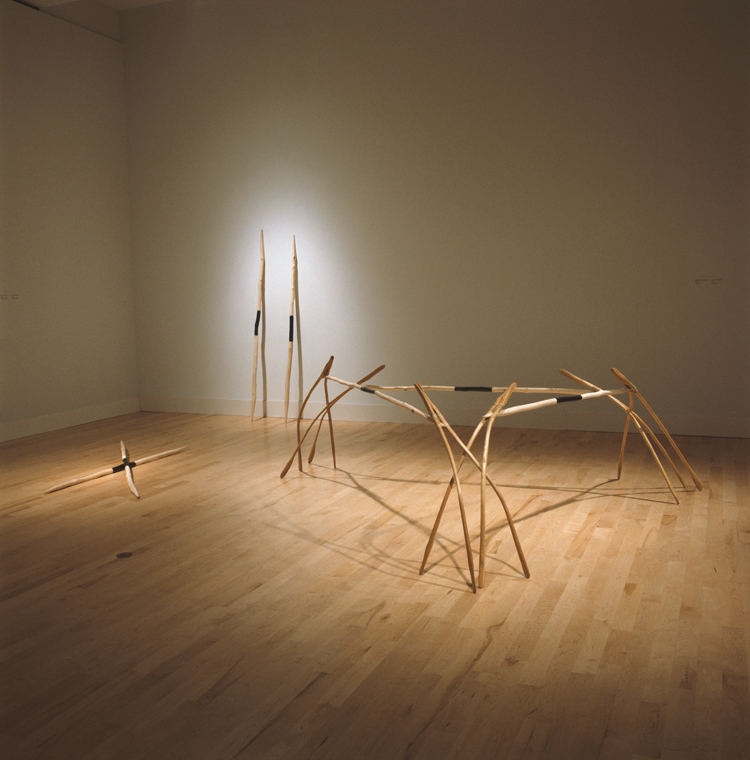
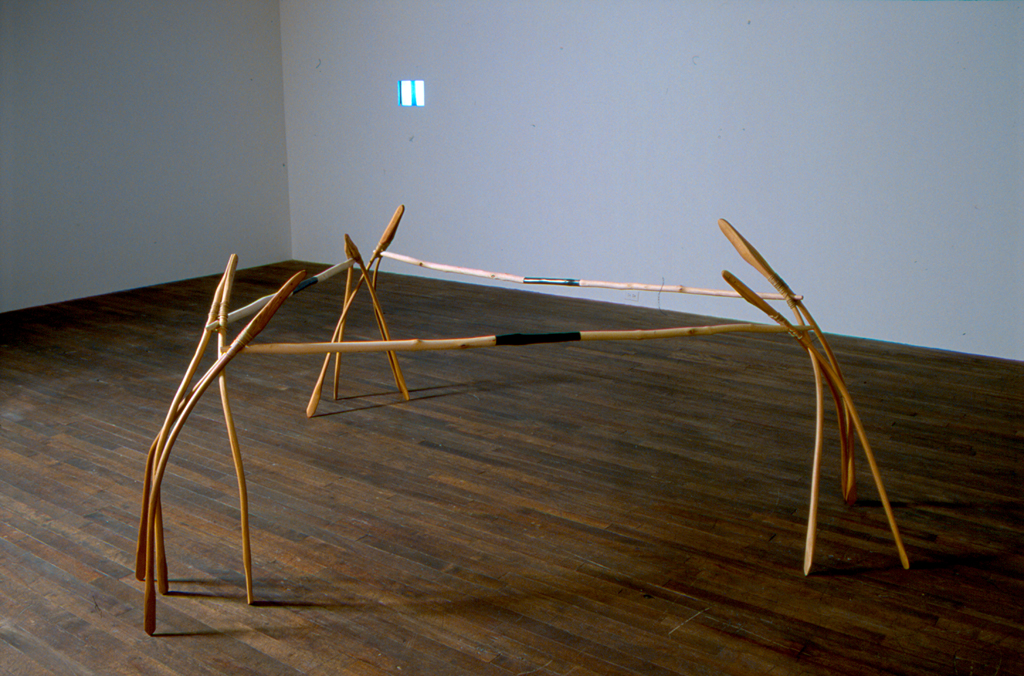
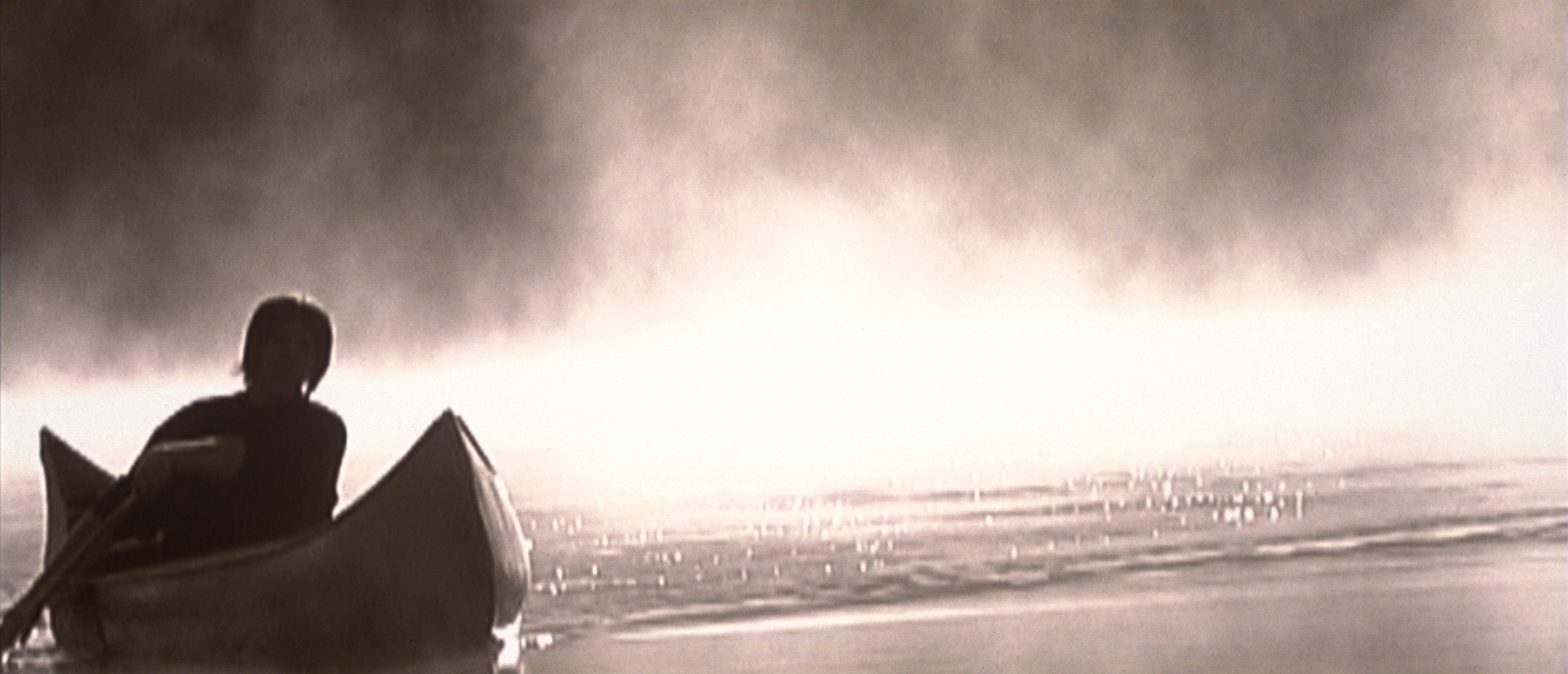

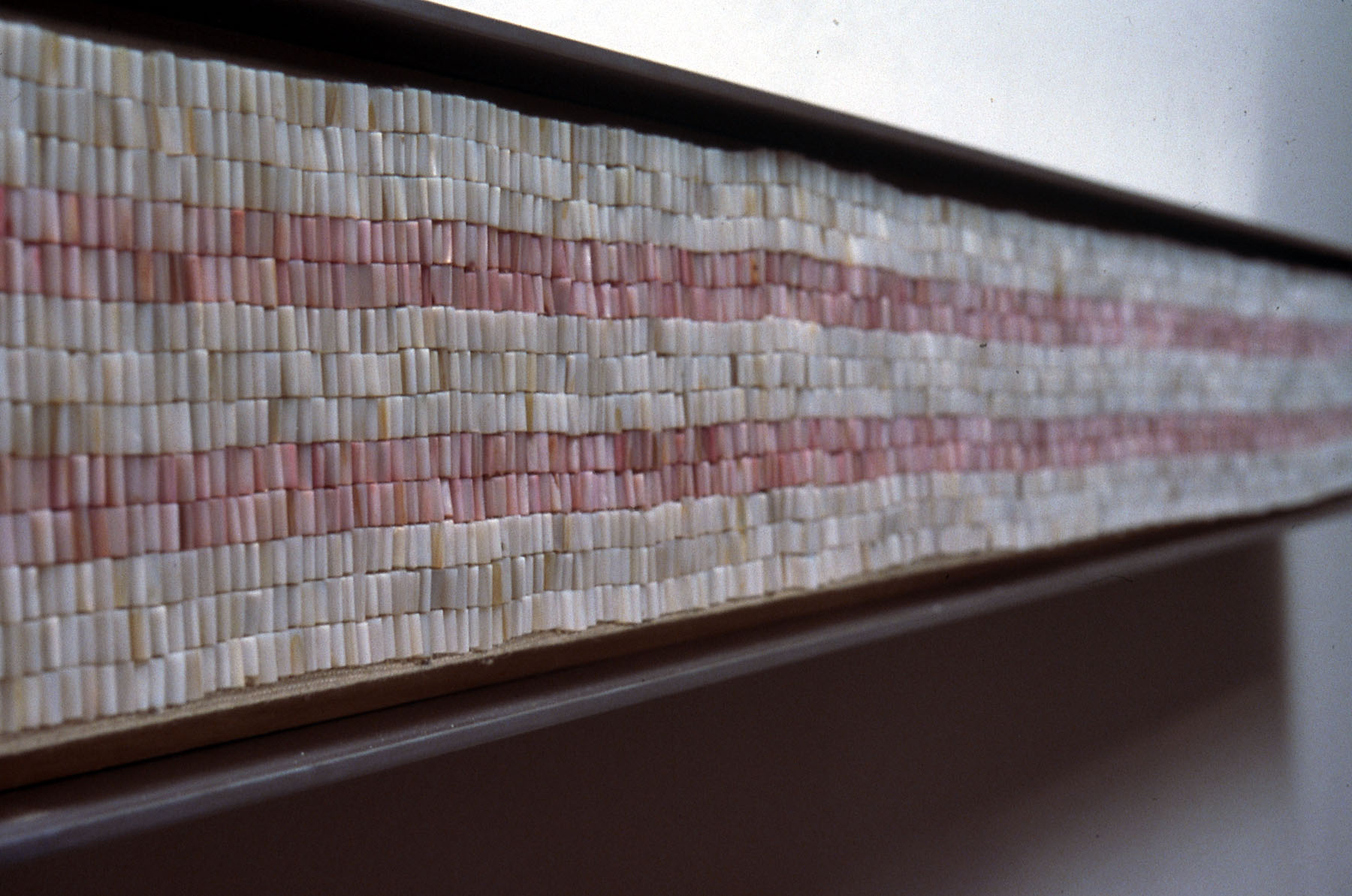
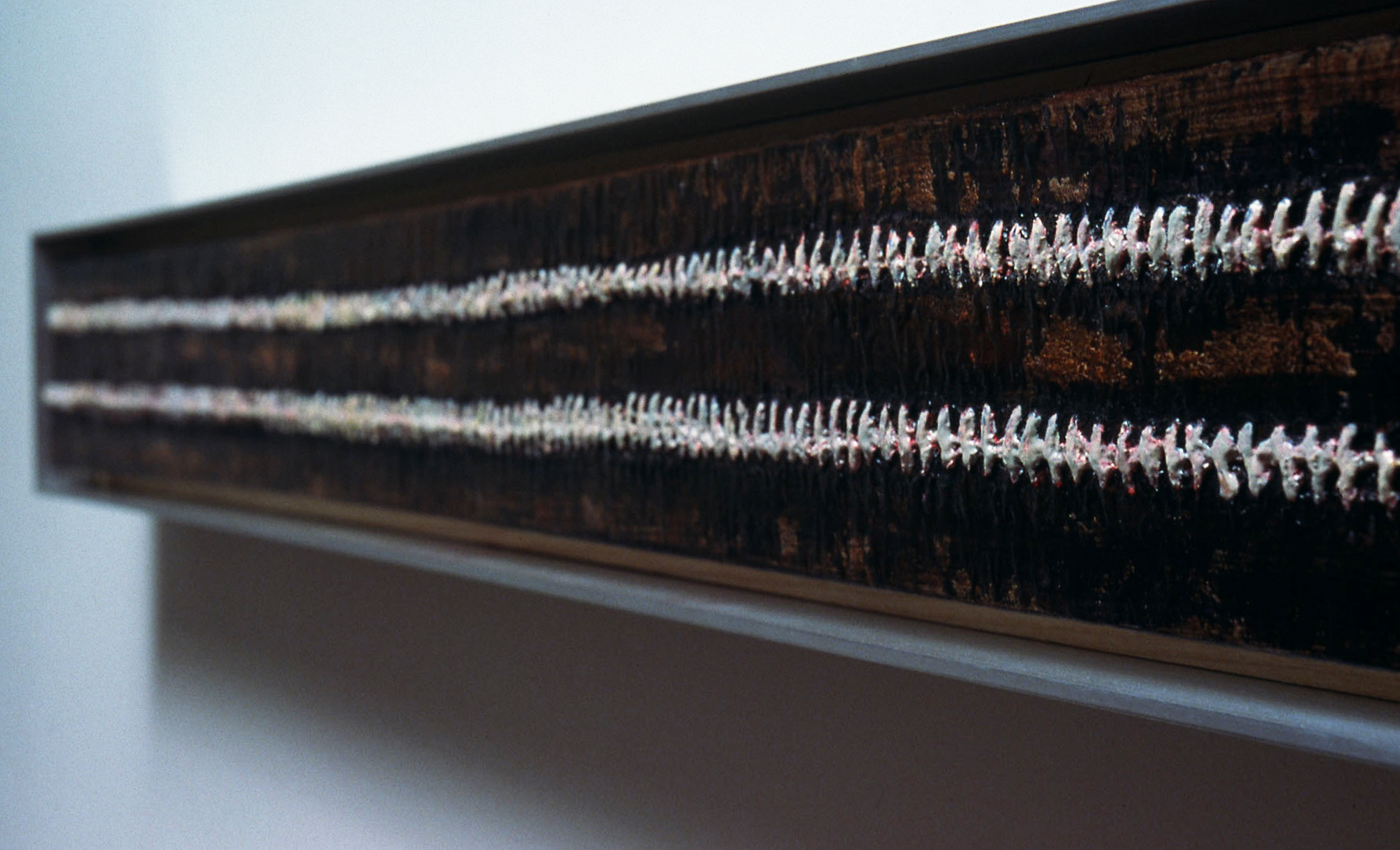
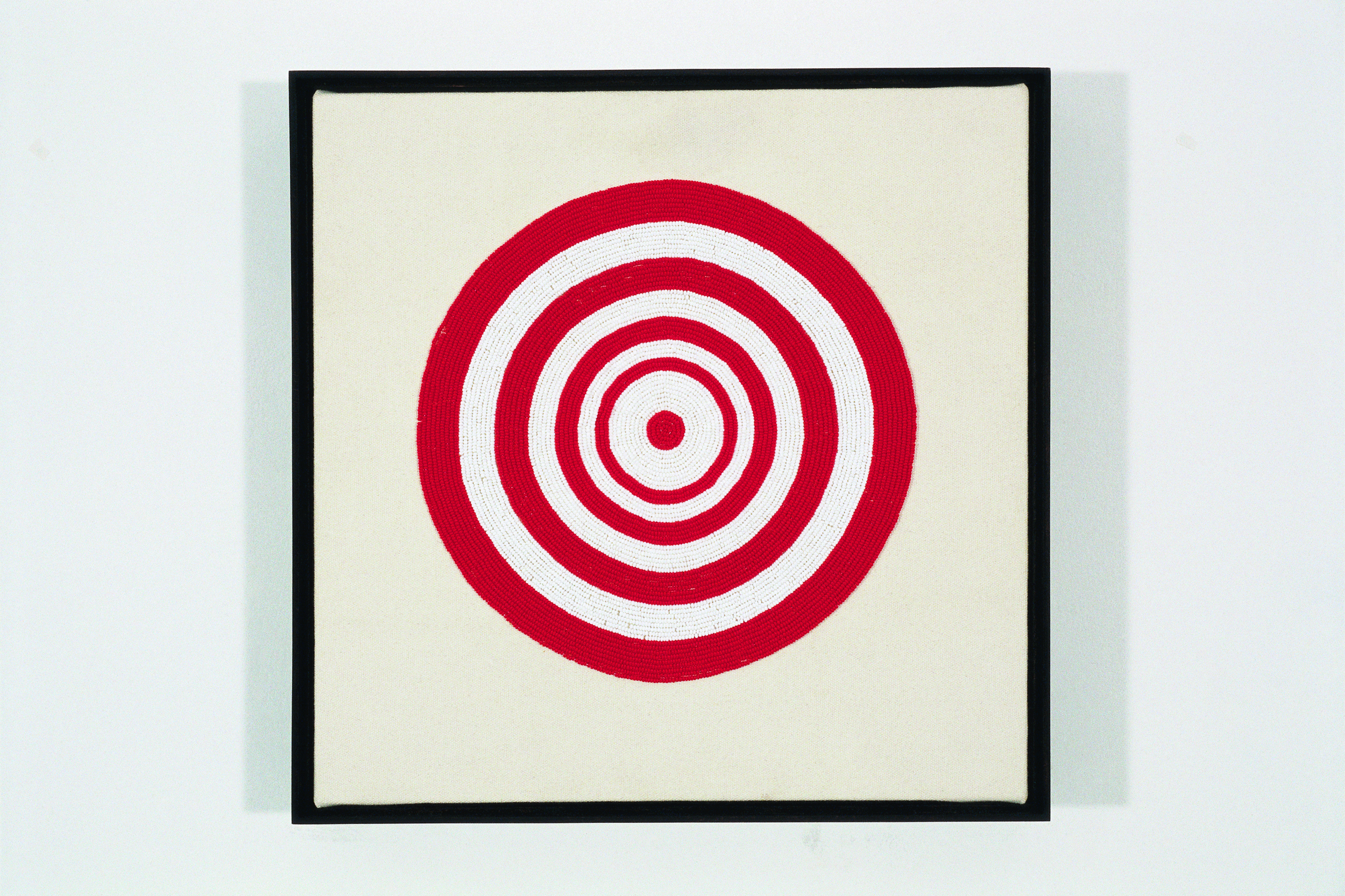
Installation view of Indian Act in my solo exhibition Scattered Remains / Tout ce qui reste at the Montreal Museum of Fine Art in 2017
The scar project —2005 to 2013
In 2005 I initiated what would become an 8 years-long grassroots research- creation project which looked at the notion of “the scar’’ as a framework to speak about wounds, trauma and our ability to heal through personal storytelling. Interested in exploring, through a material practice, recent understandings in neuroscience (such as our ability to ‘rewire’ our brain and Narrative Therapy), I conceived of The Scar Project.
Using the gallery as an ‘open atelier’ where participants could anonymously ‘drop in’ and share their personal narratives and traumas with others through the craftwork of sewn canvases (representing scars) and handwritten letters chronicling their experience. Each venue became a site for personal storytelling, healing, forgiveness, and embodied experience. Through this community practice I have developed holistic, Indigenous-oriented, methodologies of collective healing through durational co-creation which will inform A Song for My Mother.
Light Assembly – 2023
Light Assembly is the culmination of the exploration of my own lineage both as an Indigenous woman, a generational survivor, and as an artist. As the Indian Act had removed women from a concept of lineage the approaches to rectify this through craft. My relationship with my mother was squandered by trauma caused by the Sixties Scoop as her relationship with her mother, and my grandmother’s relationship with her mother, had been done through previous impositions of systemic colonial violence against Indigenous women. Light Assembly aims to rectify and explore healing from this trauma building on the works across my career.
This work has been the site of technical advancement from decades of work starting from experimentation with loom moving to the development of radical techniques with ceramics. From moving beyond the loom by integrating the it into the work itself to moving beyond the limitations of traditional ceramic glazing technique (leading to a palette of over 150 colours of unprecedented vibrancy for the medium) Light Assembly shows the possibilities available to undertake A Song for My Mother. Kinawind Lab has shown itself more than capable to use advanced techniques in 3D printing and 3D scanning to pave the way for new methods to be https://www.nadiamyre.net/support-materialdeveloped to manipulate the surface of the ceramic beads, directly leading to and making feasible A Song for My Mother.
Light Assembly: Julie, 2023, Woven handmade ceramic beads, stainless steel wire, 84 x 60 inches/214.4 x 152.4 cm





